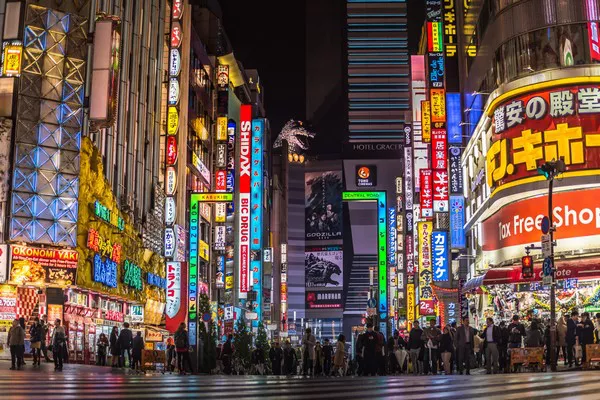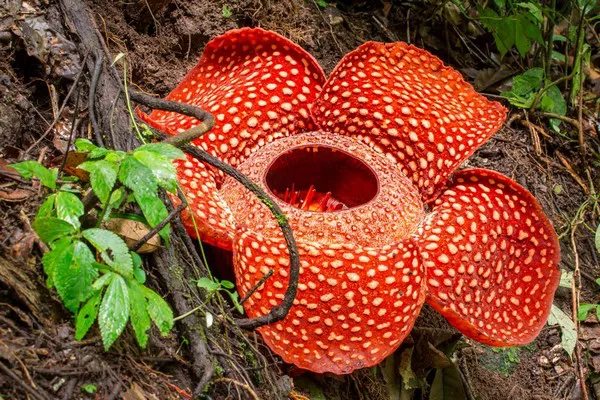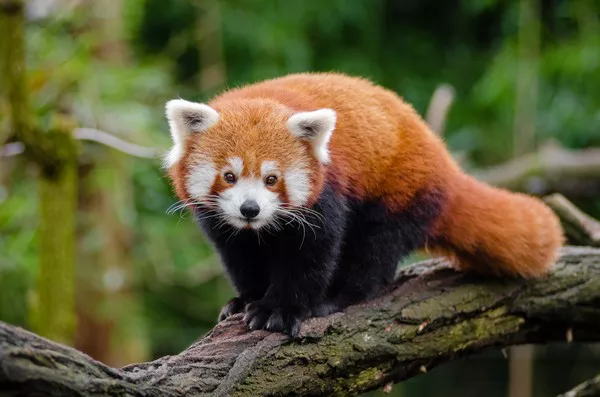In the ever-expanding tapestry of human civilization, cities stand as beacons of progress, culture, and diversity. As our world becomes increasingly urbanized, the largest cities take on a crucial role in shaping global narratives, economies, and societies. This article embarks on a comprehensive exploration of the 15 largest cities in the world, unraveling the intricate dynamics that make each metropolis a unique hub of human activity.
15 Largest Cities in the World
1. Tokyo, Japan:
At the pinnacle of urban magnitude is Tokyo, Japan’s sprawling capital. With a metropolitan population exceeding 37 million, Tokyo stands as the world’s most populous city, a pulsating megacity that seamlessly merges ancient traditions with cutting-edge technology. From the historic districts of Asakusa to the bustling Shibuya crossing, Tokyo’s dynamic energy encapsulates the essence of a city that never sleeps.
The Greater Tokyo Area serves as a global financial and cultural epicenter, boasting iconic landmarks such as the Tokyo Tower and the Meiji Shrine. As Tokyo continues to evolve, it remains a symbol of Japan’s resilience, innovation, and the coexistence of tradition and modernity.
2. Delhi, India:
In the heart of South Asia, Delhi, India’s capital territory, emerges as the second-largest city globally, with a population exceeding 30 million. As a melting pot of diverse cultures, languages, and traditions, Delhi encapsulates the rich tapestry of India. From the historic Red Fort to the modern architectural marvels of New Delhi, the city’s landscapes reflect its multifaceted identity.
Delhi serves as a political, economic, and cultural powerhouse, shaping the trajectory of the Indian subcontinent. The city’s vibrant markets, ancient monuments, and a bustling street life contribute to its allure as a vibrant metropolis.
3. Shanghai, China:
Moving eastward, Shanghai stands as China’s jewel, the third-largest city globally, with a population surpassing 27 million. Situated on the Yangtze River Delta, Shanghai’s skyline, adorned with the Oriental Pearl Tower and the Jin Mao Tower, epitomizes the nation’s rapid economic ascent. The city’s historic Bund area and modern Pudong district harmonize tradition and progress, showcasing China’s ability to bridge the past and the future.
Shanghai’s significance as a global financial and trade hub has elevated it to a status of international influence. The city’s cultural vibrancy, technological advancements, and economic prowess contribute to its prominence on the world stage.
4. São Paulo, Brazil:
In South America, São Paulo rises as the fourth-largest city globally, with a population exceeding 21 million. Renowned as Brazil’s economic and cultural heart, São Paulo is a sprawling metropolis characterized by its skyscrapers, diverse communities, and a vibrant arts scene. The city’s resilience and dynamic energy make it a hub of creativity and innovation.
São Paulo’s cultural richness, from street art to world-class museums, reflects the nation’s dynamic and ever-evolving society. As Brazil continues to assert its influence, São Paulo remains a key player in shaping the country’s narrative.
5. Mumbai, India:
On India’s western coast, Mumbai, formerly known as Bombay, ranks as the fifth-largest city globally, with a population exceeding 20 million. As the financial and entertainment capital of India, Mumbai is a city of contrasts, where towering skyscrapers stand alongside sprawling slums. The city’s iconic Gateway of India, Marine Drive, and the Bollywood film industry contribute to its cultural richness and global allure.
Mumbai’s role as an economic powerhouse and the heart of India’s film and television industry makes it a focal point for commerce, arts, and media. The city’s resilience, as demonstrated during periods of rapid growth and challenges, reflects the spirit of Mumbai and its pivotal role in shaping India’s destiny.
6. Beijing, China:
As the political and cultural epicenter of China, Beijing ranks as the sixth-largest city globally, with a population exceeding 21 million. Steeped in history and tradition, Beijing serves as the nation’s symbolic heart, boasting landmarks like the Forbidden City, Tiananmen Square, and the Temple of Heaven. The city’s rich cultural heritage is complemented by its status as a modern metropolis, where technological advancements and global diplomacy take center stage.
Beijing’s role in shaping China’s narrative on the world stage is evident in its economic prowess, technological innovation, and cultural vibrancy. As China continues to assert its influence, Beijing remains a key player in defining the nation’s trajectory.
7. Cairo, Egypt:
In the heart of North Africa, Cairo stands as the seventh-largest city globally, with a population exceeding 20 million. Nestled along the banks of the Nile River, Cairo is a city where ancient history and modern urbanity converge. The Giza Plateau, home to the Great Pyramid and Sphinx, serves as a testament to Egypt’s enduring legacy.
Cairo’s role as the political, cultural, and economic capital of Egypt makes it a dynamic metropolis where tradition and progress intersect. The city’s vibrant street life, bustling markets, and historic landmarks contribute to its allure as a pivotal hub in the Middle East and Africa.
8. Osaka, Japan:
Returning to Japan, Osaka claims the eighth spot among the world’s largest cities, with a population exceeding 19 million. As a major economic and cultural center, Osaka complements Tokyo’s influence, showcasing a distinct identity rooted in commerce, entertainment, and culinary excellence. The city’s iconic Osaka Castle, historic temples, and vibrant street life characterize its dynamic urban landscape.
Osaka’s reputation as the “Kitchen of Japan” reflects its culinary prowess, with street food, traditional dishes, and Michelin-starred restaurants offering a diverse gastronomic experience. The city’s economic resilience, technological innovation, and cultural vibrancy contribute to its prominence within Japan and on the global stage.
9. Istanbul, Turkey:
Straddling two continents, Europe and Asia, Istanbul ranks as the ninth-largest city globally, with a population exceeding 15 million. Steeped in history as the former capital of the Byzantine and Ottoman Empires, Istanbul is a city where ancient architecture meets modern cosmopolitanism. The Hagia Sophia, Blue Mosque, and Grand Bazaar are among the city’s iconic landmarks.
Istanbul’s strategic location along the Bosporus Strait has shaped its role as a key economic and cultural hub for centuries. The city’s vibrant markets, diverse neighborhoods, and rich cultural heritage contribute to its allure as a bridge between East and West.
10. Chongqing, China:
Closing our exploration of the world’s largest cities is Chongqing, the tenth-largest globally, with a population surpassing 18 million. Nestled along the Yangtze River, Chongqing is a sprawling metropolis characterized by its mountainous terrain, rapid urbanization, and economic significance. The city’s historic sites, such as the Dazu Rock Carvings, blend with its modern skyline, showcasing a harmonious coexistence of tradition and progress.
Chongqing’s status as a major transportation hub, economic center, and cultural focal point in southwestern China contributes to its role as a key player in the country’s development. The city’s diverse landscapes, thriving arts scene, and unique cuisine add to its multifaceted identity.
11. Karachi, Pakistan:
As the financial and economic hub of Pakistan, Karachi ranks as the eleventh-largest city globally, with a population exceeding 14 million. Situated on the Arabian Sea, Karachi is a bustling metropolis that serves as the nation’s gateway to the world. The city’s diverse communities, historic landmarks, and vibrant street life contribute to its dynamic urban character.
Karachi’s role as Pakistan’s economic powerhouse is evident in its thriving industries, financial institutions, and bustling port. The city’s cultural diversity, from traditional markets to contemporary art scenes, adds to its charm and significance on the global stage.
12. Kinshasa, Democratic Republic of the Congo:
In the heart of Central Africa, Kinshasa stands as the twelfth-largest city globally, with a population exceeding 13 million. Nestled along the Congo River, Kinshasa is the capital of the Democratic Republic of the Congo, serving as a political, cultural, and economic focal point. The city’s vibrant music scene, historic sites, and diverse neighborhoods reflect its complex and dynamic identity.
Kinshasa’s significance on the African continent is heightened by its role as a center of political activity and cultural expression. The city’s resilience and creativity contribute to its prominence in shaping the narrative of the Democratic Republic of the Congo.
13. Manila, Philippines:
On the islands of Southeast Asia, Manila ranks as the thirteenth-largest city globally, with a population exceeding 13 million. As the capital of the Philippines, Manila is a bustling metropolis that blends historical landmarks with modern urban developments. The city’s vibrant street life, cultural festivals, and diverse culinary scene contribute to its dynamic character.
Manila’s role in Philippine history, from Spanish colonial rule to contemporary political and economic influences, is evident in its diverse architecture and cultural heritage. The city’s resilience and continuous growth make it a key player in the Southeast Asian region.
14. Tianjin, China:
In northern China, Tianjin claims the fourteenth spot among the world’s largest cities, with a population surpassing 13 million. As a major port city and economic hub, Tianjin complements the influence of Beijing and Shanghai in shaping China’s narrative. The city’s historic architecture, modern developments, and cultural attractions contribute to its dynamic urban landscape.
Tianjin’s significance in trade and commerce is evident in its thriving industries, bustling port, and economic partnerships. The city’s cultural heritage, from traditional teahouses to contemporary art scenes, adds to its charm and relevance in the global context.
15. Mumbai, India:
As we revisit India, Mumbai claims a dual presence on the list, ranking as the fifteenth-largest city globally, with a population exceeding 20 million. Mumbai’s significance as India’s financial capital and entertainment hub underscores its dynamic and multifaceted identity. The city’s iconic landmarks, diverse communities, and vibrant street life contribute to its allure as a global metropolis.
Mumbai’s resilience, as demonstrated through periods of rapid growth and challenges, reflects its pivotal role in shaping India’s destiny. The city’s cultural richness, from Bollywood to traditional markets, adds to its prominence on the global stage.
See Also:THE WORLD’S 3 LARGEST LANDLOCKED COUNTRIES
Conclusion:
In the vast expanse of urban landscapes, the 15 largest cities in the world stand as testament to the human capacity for innovation, diversity, and collective progress. From the historic streets of Tokyo to the bustling markets of Mumbai, each metropolis weaves a unique narrative, shaped by history, culture, and the relentless march of progress. As these urban giants continue to evolve, they serve as crucibles of creativity, economic dynamism, and cultural exchange, shaping the course of nations and influencing the global narrative. In navigating the intricate tapestry of the world’s largest cities, we gain insights into the collective human experience, where the past meets the present, and the future unfolds in the vibrant streets and towering skyscrapers of these bustling urban landscapes.
You Might Be Interested In:



























